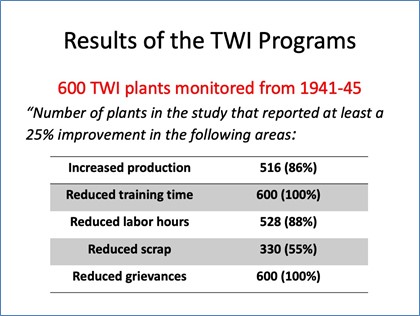Competency 101 – Part 4: SHOW ME THE MONEY!!!!!!
Jeff Griffiths, FCMC CTDP
In my previous article, I mentioned some of the facts supporting the use of competencies. Some of you said “prove it” – so here’s some hard data.
In Canada, the ground floor level on competencies is based on the “Essential Skills” – what in other contexts have been called workplace literacy, basic literacy, or “foundation skills”. A lot of active research has been conducted to look at what happens when employers focus on these competencies when hiring and onboarding for entry-level jobs. Here are some examples:
- In the hospitality sector, a study[1] by David Giamatti and the Social Research and Demonstration Corporation (SRDC) found the following:
- A Wendy’s restaurant in Fredericton, N.B., credited competency focus for new hires for reducing staff turnover by between 65% and 80%, down from between 125% and 150% two years earlier, saving the franchisee $5,000 annually in new staff training
- Among companies participating, all experienced lower hiring costs, an average of $1000 per employee in reduced costs due to errors, and increased supervisory efficiency (not having to correct mistakes, not having to deal with rework, etc)
- In the construction sector: BuildForce Canada reported that employers who spent $132.90/apprentice on a basic program to improve foundation competencies post-hire got back – on average – $26.34 in safety, quality and productivity improvements for every dollar invested. I’ll do the math for you: that’s over $3500 return on a $133 investment.

If your investment advisor told you about a stock that was going to give you that kind of return, would you write them a cheque?
Those are impressive numbers and for some pretty basic competencies. But what about more complex work?
Waiward Steel – from Compliance to Competency
In 2017 I was involved in a wide-ranging project for heavy construction in Alberta. One of the firms involved in that project – heavy steel fabrication and construction – had a good safety program, but still experienced an average of 3.7 lost time accidents a year, plus numerous others that resulted in modified duties for workers. After experiencing a series of near fatal accidents, the management team, led by the CEO and COO, decided “never again”, and began a journey toward a competency-based approach for hiring, work assignment, and internal deployment. This philosophy was applied throughout the company, to ever position from the CEO on down. It wasn’t easy, but over a few years they managed to embed competency into the culture of the firm. The result?
- An 800% improvement in their safety record
- Over 5 million person-hours without a lost-time accident
- A saving in management time and productivity losses from accidents and incidents in excess of $1.5 million

Canadian Natural – Bolted Joint Integrity Management
Another Alberta-based company, Canadian Natural, has a portfolio of oil refining and upgrading facilities. These require periodic shut-down and maintenance, which often involves removing and replacing valves, pipes and flanges. Historically, the start-up after these maintenance periods is fraught with problems, and among those problems, leaks to flanges are common. In addition to the re-work involved in fixing the leaky joints, there’s also a risk of fires or explosions, not to mention environmental damage. But leaky joints were considered an “operational fact of life”.
To address this, the company embarked on an initiative that combined improved competency with some new tracking processes for bolted joints (the “Bolted Joint Integrity Management” program). The competency component was focused on ensuring proper tools and techniques would be used for the particular joints being installed, and this was directed at internal maintenance employees, as well as contractor organizations engaged in shut-down maintenance. The cost of the program is minuscule compared to the overall cost of a shut-down, and since launching has resulted in over 40,000 flanges installed without a leak or fire, and a 30% reduction in maintenance costs. That’s millions in savings annually.
All of this is documented in a detailed Canada West Foundation report[2], to which I had the privilege of contributing. You can get the full report HERE.
Conclusion
The evidence is overwhelming: embracing competency-based approaches drives real improvements in safety, quality, productivity and cost metrics for organizations. It isn’t easy, but the results speak for themselves.
In 2021, as companies try to grow and improve and change to climb back from the COVID pandemic, competency-based approaches need to be a cornerstone of your business. What’s stopping you?
[1] Giamatti, D et al. UPSKILL: A Credible Test of Workplace Literacy and Essential Skills Training. SRDC August 2014. Retrieved from https://www.srdc.org/publications/UPSKILL-A-Credible-Test-of-Workplace-Literacy-and-Essential-Skills-Training-details.aspx
[2] Lane, J. Beyond the Rules: Moving Safety from Compliance to Competence. Canada West Foundation, May 2017
Is your organization shifting toward competency-based approaches? What’s your experience been? Leave me a note in the comments below.
Read With Us
If you found this information useful, please subscribe to be notified for our next great post.
TIME SENSITIVE!!!
We’re planning on holding a small-capacity, invitation-only executive briefing on competency-based approaches. If you’re interested in applying to attend, shoot me an email – jeff@workforcestrat.com – and I’ll make sure you get the details once we’ve worked them out.








